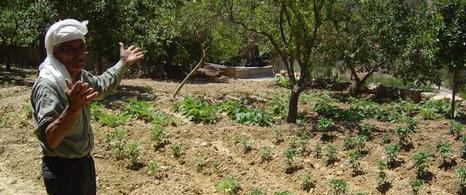Visioning and Strategic Planning
Visioning and Strategic Planning

Agreeing on a common vision and development of a strategic plan for multiple-use water service provision, which addresses people’s multiple water needs--taking into account gender and equity issues of multiple use services.
Providing multiple-use water services is about meeting people’s multiple water demands. As different people might have different demands, using water in different ways, it is important to establish a clear and common vision at water-user level and to discuss and weigh different strategic options with the participation of different water-user groups and water service providers.
OBJECTIVE
Agreeing on a common vision and development of a strategic plan for multiple-use water service provision, which addresses people’s multiple water needstaking into account gender and equity issuesof multiple use services.
ACTIVITIES
DEVELOPING A COMMON VISION
Develop a common vision about water use in the community or system in the long term (5 - 20 years). In order to develop a plan for improving multiple-use service provision in a community, system or basin, it is important to have a common understanding about a long-term vision. Therefore, a useful first step is to do a visioning exercise with users and service providers.
DEVELOPING STRATEGIES FOR ACHIEVING THE VISION: PUTTING THE OPTIONS ON THE TABLE
After having determined a clear-long term goal, strategies towards meeting this vision are developed. This will include:
- Providing the infrastructural and managerial options for implementing or improving multiple-use water services. For each option, the potential for different uses, costs, benefits, potential impact, management arrangements etc. should be assessed, presented and discussed. Also, both synergies and trade-offs between uses and users are to be anticipated and addressed.
- Agreeing through participatory and accountable procedures and criteria to prioritise water uses and users and related options.
ASSESSING AND PRIORITISING STRATEGIES
Assess the feasibility of the identified strategies. Criteria for prioritisation have to be set. These can include:
- Potential impact of the strategic option of water use for different users, in particular marginalised people.
- Potential impact of the strategic option on water resources.
- Cost estimation of the implementation of the strategic option.
- Technical feasibility of the strategic option.
- Social and managerial feasibility of the strategic options.
Then, a ranking and prioritisation of the strategic options has to be done, based on the assessment of the options according to the set criteria. In addition, the availability or resources has to be taken into account in the prioritisation of strategic option.
TIP
It is important to consider views and ideas on vision and technologies from all stakeholders, including the marginalised ones.
TOOLS
The following tools will be useful to support the activities within this phase:
